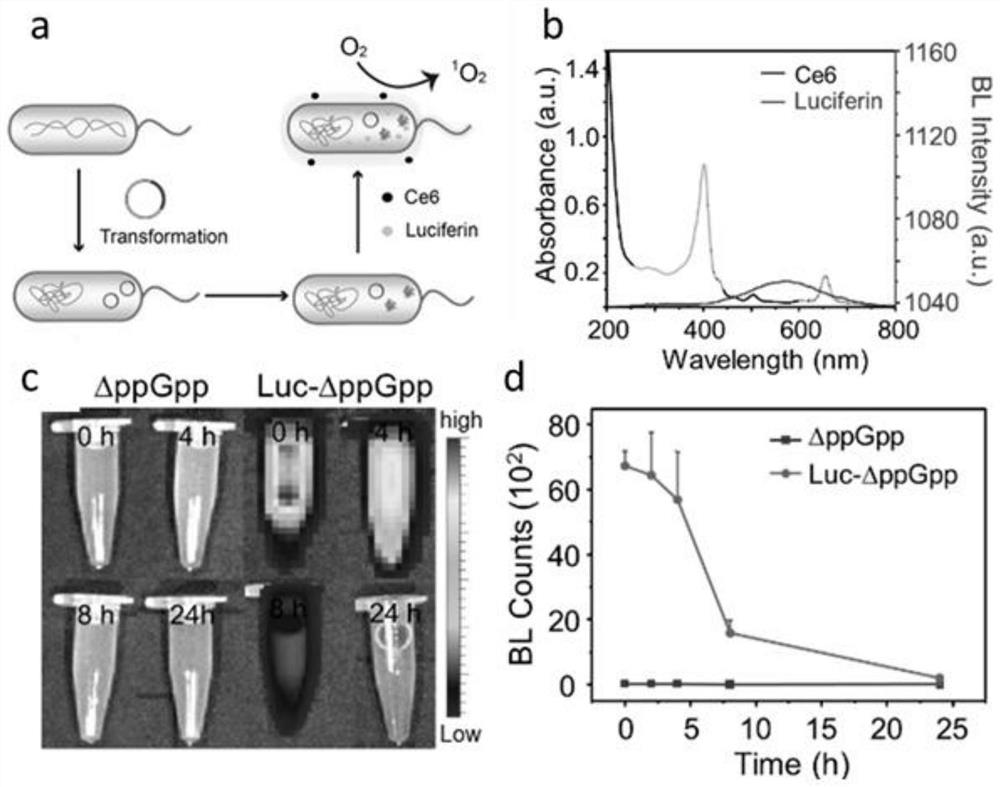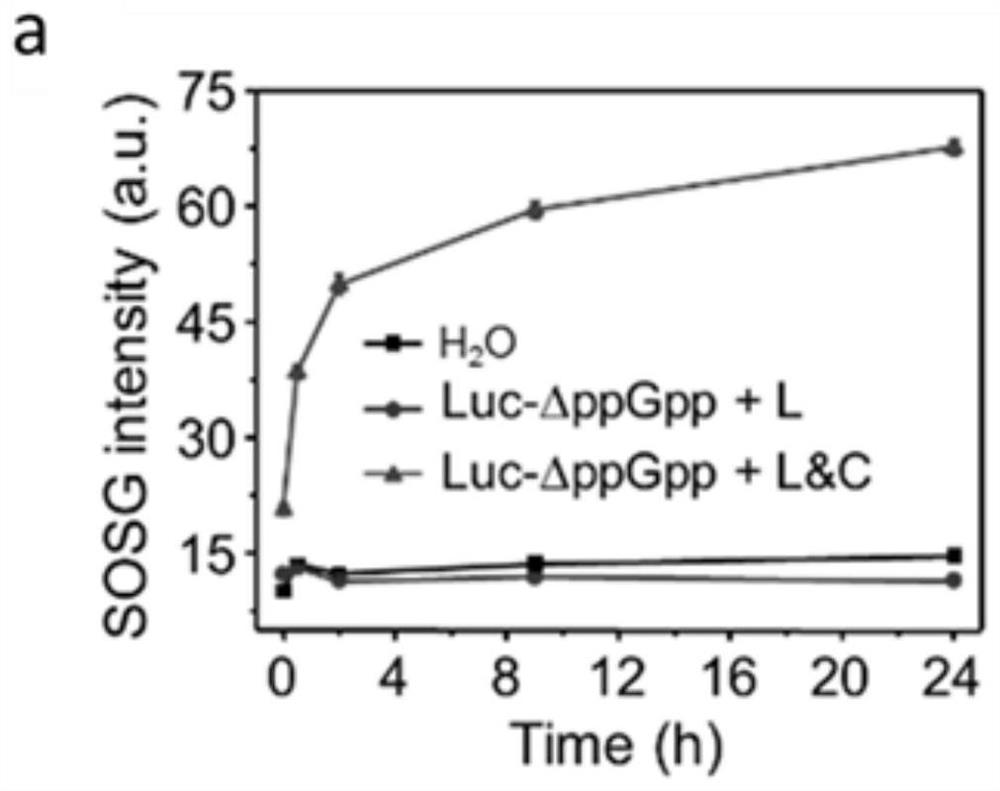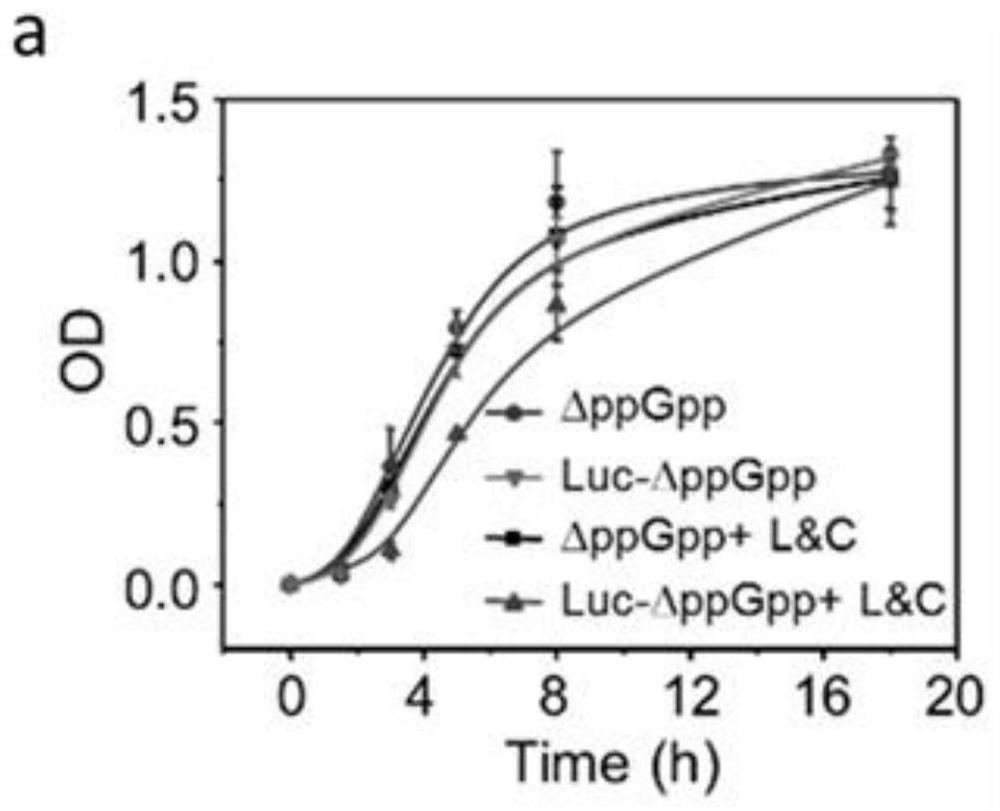Bioluminescent engineered bacterium composition, and preparation method and application thereof
A bioluminescent, engineering technology, applied in biochemical equipment and methods, microbial-based methods, drug combinations, etc., can solve problems such as inability to effectively eliminate tumors, reduce cell anti-tumor effects, and toxic and side effects, and achieve monotherapy bad effect
- Summary
- Abstract
- Description
- Claims
- Application Information
AI Technical Summary
Benefits of technology
Problems solved by technology
Method used
Image
Examples
Embodiment 1
[0038] Embodiment 1: Preparation of bioluminescent engineered bacterial composition
[0039] Construction of bioluminescent engineered bacteria: Attenuated Salmonella was treated with ice-cold calcium chloride solution to prepare competent bacteria, and the plasmid pGL4.13[luc2 / SV40] with firefly luciferin was passed through standard steps Transfer to competent bacteria, spread the competent bacteria on the agar plate containing ampicillin, incubate at 37°C for 16 hours, add the luminescent substrate D-luciferin, and select the successfully transformed bioluminescence A single colony of engineered bacteria was propagated and cultured for subsequent experiments.
[0040] Mix the components in the composition according to the volume ratio, wherein component two is the luminescence substrate D-fluorescein dissolved in phosphate buffer solution, the concentration is 30mg / ml; component three is the photosensitive molecule dissolved in ammonium bicarbonate solution Chlorin e6, the ...
Embodiment 2
[0041]Example 2: Detection of Luminescence Properties of Bioluminescent Engineered Bacteria
[0042] The bioluminescent engineered bacterial composition prepared in Example 1 was tested for its luminescent properties, and the results were as follows: figure 1 shown. Such as figure 1 As shown in b, the fluorescence spectrum produced by the reaction of the bioluminescent bacteria with the substrate fluorescein has good compatibility with the absorption spectrum of the photosensitive molecule chlorin e6. figure 1 As shown in c and 1d, the engineered bacteria can produce bioluminescence up to 4 hours after reacting with their substrates as detected by small animal imaging. It shows that the present invention can utilize the fluorescence produced by the bioluminescent engineered bacteria and the substrate as an excitation light source.
Embodiment 3
[0043] Example 3: The engineered bacterium produces singlet oxygen when it mixes with its substrate and photosensitive molecule
[0044] The bioluminescent engineered bacteria prepared in Example 1 were mixed with their substrates and photosensitive molecules to detect the production of singlet oxygen with a SOSG kit. The result is as figure 2 As shown, when the bioluminescent engineered bacteria are mixed with their substrates and photosensitive molecules, the fluorescence of SOSG gradually increases with time, indicating that the excitation light generated by the bioluminescent engineered bacteria catalyzing the substrate can excite the photosensitive molecules to produce singlet states. Oxygen can be used for photodynamic therapy.
PUM
 Login to View More
Login to View More Abstract
Description
Claims
Application Information
 Login to View More
Login to View More - R&D
- Intellectual Property
- Life Sciences
- Materials
- Tech Scout
- Unparalleled Data Quality
- Higher Quality Content
- 60% Fewer Hallucinations
Browse by: Latest US Patents, China's latest patents, Technical Efficacy Thesaurus, Application Domain, Technology Topic, Popular Technical Reports.
© 2025 PatSnap. All rights reserved.Legal|Privacy policy|Modern Slavery Act Transparency Statement|Sitemap|About US| Contact US: help@patsnap.com



